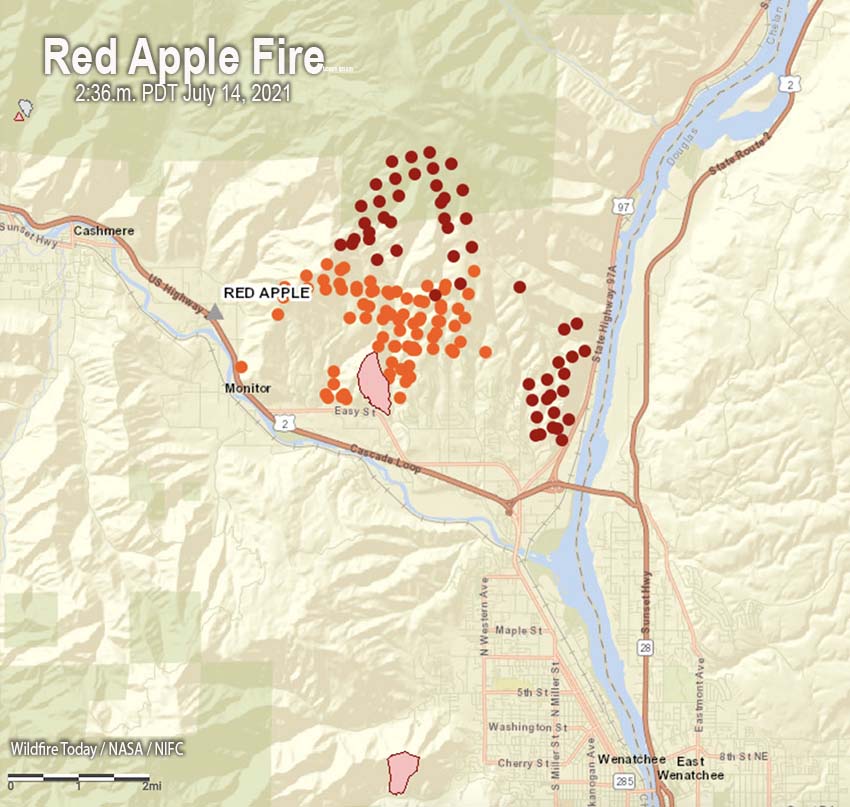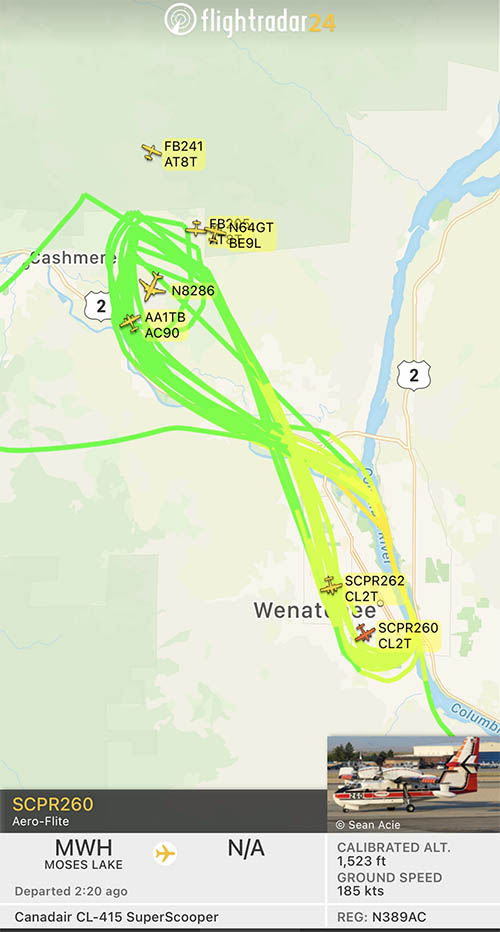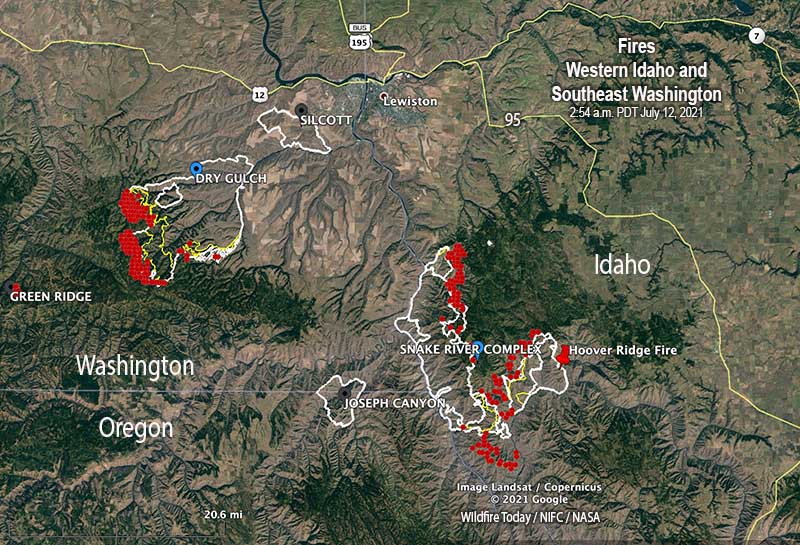
Friday President Biden hosted his second virtual meeting to discuss wildfire preparedness. This session was with the Governors of three western states, Montana, Washington, and California. The earlier meeting on the topic was June 22, 2021.
The Governors told Mr. Biden that their states need more aviation resources, they need help with obtaining aviation fuel, they need more boots on the ground, and they encourage aggressive initial attack.
“Everything we need to fight forest fires is in dire need across the Western United States,” said Governor Jay Inslee of Washington.
These requests, coming from multiple states in late July with the meat of the fire season still possibly on the horizon, are astonishing.
The President began the meeting with a few remarks before asking the three Governors what the Federal government could do to help.
“Our resources are already being stretched to keep up,” Mr. Biden said. “We need more help, particularly when we also factor in the additional nationwide challenges of pandemic-related supply chain disruptions and our ongoing efforts to fight COVID. We’ve had a few COVID clusters at our fire camps, which further limits resources. It’s just one more reason why it’s so darn important that everyone get vaccinated, I might add. Sadly, we’ve also lost two brave firefighters in the last month in a plane crash in Arizona, and five were seriously injured last week battling the Devil’s Creek fire in Montana. It’s — to state the obvious, and you governors know it better than anybody — it is really, really dangerous work, and it takes incredible bravery to do it. And these heroes deserve to be paid — and paid well — for their work. That’s why, last month, I was able to announce — and it’s not paying that well, in my view, to be honest with you — immediate action to make all federal firefighters making at least $15 an hour. I think they deserve more than that. We’re also working with Congress to make sure that our firefighters are paid better permanently. Permanently.”
Governor Greg Gianforte of Montana was called on first. He spoke briefly, saying that aggressive initial attack was important. “Without that commitment,”Governor Gianforte said, “we would have had many more large scale fires. And we ask that our federal partners join us in applying this operating principle. Whether it’s a fire that starts on private, state, or federal land — fires are easier to manage when they’re smaller.”
Governor Gianforte then went on to talk about active forest management.
Below are quotes from the other two Governors.
Governor Jay Inslee, Washington
My biggest concern might surprise you because all of the governors share these immediate concerns. We have a huge need for additional aerial assets, additional dozer bosses so we can get our dozers into fire lines. We need new tra- — more trained people. We do have an emerging concern about our fuel supply for our aerial assets. Everything we need to fight forest fires is in dire need across the Western United States, not just in Washington State. We’ve had a thousand fires. It’s burned four times more at this time of year than normal. We’ve had two and a half times more acreage burn in the last decade than the previous.
Governor Gavin Newsom, California
Look, I just want to briefly — because there’s so many of us — a quick update. We’re blowing past every record, and not in a good way. We’re at over 5,700 fires year-to-date. We suppressed 59 just yesterday with some initial attacks. Over half a million acres already burned in California. To put in perspective — a record-breaking year. Last year, we were at 130,000 acres burned. We’re at 504,000 as I speak to you today.
Here’s the answer to your question. And forgive me for being so pointed again, respecting your time, but I want to be a little bit more specific. Jay referenced it obliquely. Please pay attention to this fuels issue. We had to get our National Guard to get some emergency fuel supplies for our aerial fleet a week ago. This is a major issue, and it’s not just impacting our aerial suppression strategies on the West Coast. It’s increasingly, as you may know, impacting commercial aviation. It is a major issue.
Number two, we just simply need more boots on the ground. We can’t do without you. We’ve got 7,400 people — 7,400 already. We’re not in fire season. Fire season in California is late September, October, into November. We’re in July. We already have 7,400 personnel actively working to suppress fires. Last year, the federal government asked us for over 5,000 mutual aid support that we could not provide. That gives you a sense of what the federal government wanted from California last year to send to other states. That should give you a sense of how far behind we are with federal support.
We have four DC-10s, Mr. President. Four. Now, DC-10s aren’t the answer to every problem. They don’t fly over 35 knots. They have restrictions; there are legendary restrictions. But the reality is there is four for the country, and we’re competing. They’re all contracted. We compete with you. We compete with other states. We don’t even have access right now to DC-10s. We lost that 747 — that iconic 747 — that now has been converted to a cargo plane. You’ve seen that in Australia, not just across the West Coast. That’s now been grounded by a private contractor.
We are the largest civil aviation fleet for firefighting in the world — California. We do not come close to having the tools in the air that we need. We need your support to su- — to dramatically increase the aerial support, in addition to boots on the ground.
But here’s the final thing, and it’s the elephant in the room. I was with Governor Sisolak two days ago in his state of Nevada. The reason why is we had a fire that was on federal property. Fifty-seven percent of the forest property in California is federal, just three percent under California jurisdiction. Three percent. Fifty-seven percent under U.S. Forest Service. U.S. Forest Service is spectacular. We have deep admiration and respect, but there’s a culture that, too often, is, “Wait and see.” We can’t afford that any longer. This was a federal fire. They waited. And what we saw is the fire took off because we didn’t put enough initial assets.
Greg was making an oblique point here. I want to be a little bit more explicit: We need your help to change the culture, in terms of the suppression strategies, in this climate, literally and figuratively, to be more aggressive on these federal fires. That fire bled into Nevada and, obviously, impacted not just our two states, but deeply impacted the redundancy of this concern that comes out every year around jurisdictions and incident command and the imperative that we’re all on the same page, in terms of those initial attack strategies.









